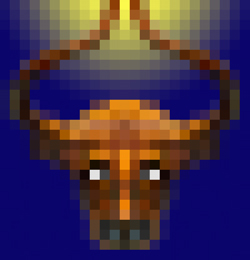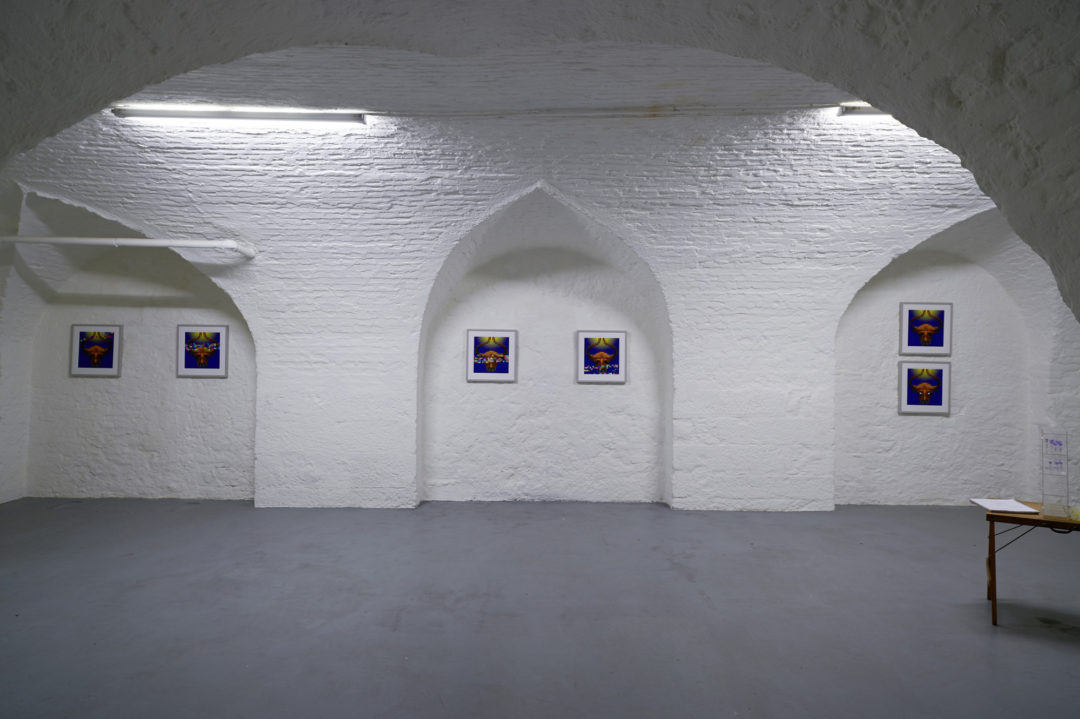Günter Seyfried
Roland van Dierendonck
Hansjörg Petschko
Federico Muffatto
2017
Download folder [pdf]
A digital image is translated into synthetic DNA, using a special method. The picture information stored as biochemical molecules allows image retouching using the CRISPR/Cas method.
The CRISPR/Cas system is a prokaryotic immune system, that provides adaptive (acquired) immunity against foreign genetic elements, such as bacteriophage genome injection. In the life sciences this system has been modified for efficient genome editing.
In two types of in vitro experiments we performed image manipulation at the level of molecules. In one we made experiments aiming on efficient on-target cleavage with full length guide RNAs (sgRNA), consisting of 20 nucleotides. In the off-target experiments we decreased the efficiency using sgRNAs with 15 and 12 nucleotides, making indel mutations visible.
The work was presented in the exhibition Nature Animée #2 in April 2017. The experiments were conducted at the Open Wetlab from the Waag Society and were partly financed by the Arts and Culture Division of the Federal Chancellery of Austria via pavillon_35 – Nature Animée #2.
We translated a small image (4_25x26_bull1_Dec.bmp – 25 x 26 pixel, 24 bit) into DNA using our methods.

Original template (zoomed)
The aim was to retouch the image, inserting eyes, using CRISPR/Cas9.

Desired output (zoomed)
The experiments worked, in the first type of experiments, on-target, using 20 nucleotides, we saw the eyes inserted, coming with minor mutations along with sequencing errors.
Result: 4_25x26_bull1_Dec.bmp ![]()

Actual output (zoomed)
In the second type of experiments, off-target, using 12 and 15 nucleotides, we saw all types of cuts, mutations and sequencing errors.
Result: 4_25x26_bull1_Dec_mu3_bu1.bmp ![]()

(zoomed)
Result: 4_25x26_bull1_Dec_mu3_bu2.bmp ![]()

(zoomed)
Result: 4_25x26_bull1_Dec_mu3_bu3.bmp ![]()

(zoomed)
Result: 4_25x26_bull1_Dec_mu2_bu4.bmp ![]()

(zoomed)

Preparing the Cas9 nuclease

SgRNAs, Cas9 nuclease

All DNA parts cleaned up

Visual sign of successful Cas9 cuts
Exhibition view Nature Animée #2 at GPLcontemporary








The original template shows a bull head with empty eye sockets. After translation into a DNA molecule a pair of eyes was inserted using CRISPR/Cas9 and fusion pcr.
The bull is a representation of a corn spirit (Frazer, The Golden Bough, 1922) and was highly meaningful for early agrarian societies, particularly in the Fertile Crescent one of the regions of origin of the Neolithic Revolution, which was shaped by crop cultivation and animal husbandry.
At the beginning of great civilisations a major cut-off from nature happens or rather an alienation from nomadic biorhythms and transforming the relation between humans and other forms of life drastically. Expelled from the Garden of Eden – Dilmun.
It may well be that humanity undertakes a further cut-off from nature by the possibilities which will be offered by the progress in applying gene editing tools like CRISPR which again alters the relation between humans and all the other forms of life, again drastically.
Dilmun, as a real and as a mythical place of the Sumerian civilisation, shaped by an exceptional biodiversity sunken in the Schatt al-Arab after deglaciation marking the beginning of the Holocene.
Conceptions of immortality (ie. longevity), like captured in the Gilgamesh epos, fictions of a carefree existence without maladies, becoming perfect humans embedded in a perfect environment are being reinvigorated in the advent of CRISPR and the transformation of biology into a creative (in eine schöpferische Wissenschaft) science. The solution to all problems of humanity like climate change, environmental pollution, health, food-production, species extinction, energy production, etc., is expected in the engineering of the living.
Life as information, life as material, life as resource and life as an invention to build the living, tailored to serve a task. Increasingly evident becomes what Heidegger formulated in his understanding of the essence of technology, which is the conversion of everything into resources (“standing reserve” – Bestand). Thus if everything becomes a resource, life in general and humans in particular will no longer be seen as having fixed identities or essences. In an interview in 1969 when asked to explain his thoughts on the dangers of technology he says among other thoughts:
“ .. What I do is I try to understand the essence of technology. When you quote this thought..the danger of the atomic bomb and the even greater danger of the technology….what I mean by this is: what is today developed as biophysics: that we may soon have the possibility to create the human, that is …regarding his organic nature…to construct him just as we need him to be. Skilled and unskilled, clever and stupid… this is going to happen. .. ”
The experiments of He Jiankui illustrate that thought, regardless of whether the modification of the C-C chemokine receptor type 5 aimed at HIV resistance or at neuronal plasticity, learning and memory, as speculated in several news publications.
Apart from the fact that the role of intelligence in human interaction, especially on a communal level, is largely overestimated. This postgenomic biological determinism opens up a possibility to integrate human qualities into an activation paradigm. Along this line discrimination and social exclusion can be legitimised.
On the background of the illusive idea of DNA as a code, waiting to be cracked, a problem emerges, concerning not only the representational model of the DNA but also our understanding of life itself.
References
Wolfgang Röllig: Das Gilgamesch-Epos. Reclam, Stuttgart 2009
Bibby, Phillips, Geoffrey, Carl (1961). Looking for Dilmun. Midpoint Trade Books
Sir James George Frazer (1922). The Golden Bough.http://www.sacredtexts.com/pag/frazer/ 25.8.2018
Serge Cleuziou, Maurizio Tosi, Juris Zarins (2002). Essays on the late prehistory of the Arabian peninsula. Istituto italiano per l’Africa e l’Oriente 2002
Richard Wisser Interview with Martin Heidegger (1969) http://intelart.blogspot.com/2017/05/richard-wisser-interview-with-martin.html 3.10.2019
Hubert L. Dreyus, Charles Spinosa: Highway bridges and feasts: Heidegger and Borgmann on how to affirm technology in Man and World 30: 159–177, 1997. Kluwer Academic Publishers